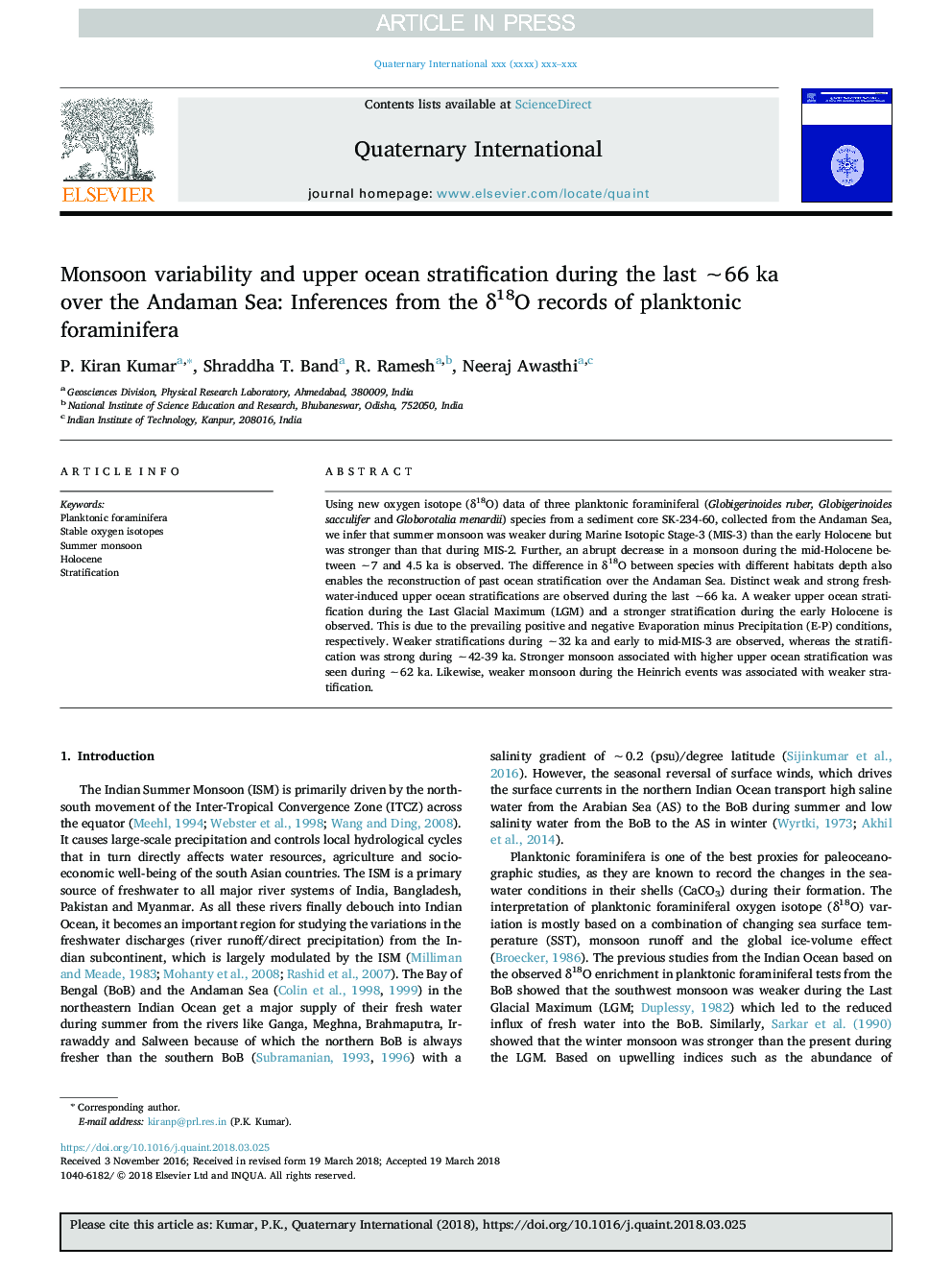| Article ID | Journal | Published Year | Pages | File Type |
|---|---|---|---|---|
| 7449365 | Quaternary International | 2018 | 7 Pages |
Abstract
Using new oxygen isotope (δ18O) data of three planktonic foraminiferal (Globigerinoides ruber, Globigerinoides sacculifer and Globorotalia menardii) species from a sediment core SK-234-60, collected from the Andaman Sea, we infer that summer monsoon was weaker during Marine Isotopic Stage-3 (MIS-3) than the early Holocene but was stronger than that during MIS-2. Further, an abrupt decrease in a monsoon during the mid-Holocene between â¼7 and 4.5 ka is observed. The difference in δ18O between species with different habitats depth also enables the reconstruction of past ocean stratification over the Andaman Sea. Distinct weak and strong freshwater-induced upper ocean stratifications are observed during the last â¼66 ka. A weaker upper ocean stratification during the Last Glacial Maximum (LGM) and a stronger stratification during the early Holocene is observed. This is due to the prevailing positive and negative Evaporation minus Precipitation (E-P) conditions, respectively. Weaker stratifications during â¼32 ka and early to mid-MIS-3 are observed, whereas the stratification was strong during â¼42-39 ka. Stronger monsoon associated with higher upper ocean stratification was seen during â¼62 ka. Likewise, weaker monsoon during the Heinrich events was associated with weaker stratification.
Related Topics
Physical Sciences and Engineering
Earth and Planetary Sciences
Geology
Authors
P. Kiran Kumar, Shraddha T. Band, R. Ramesh, Neeraj Awasthi,
